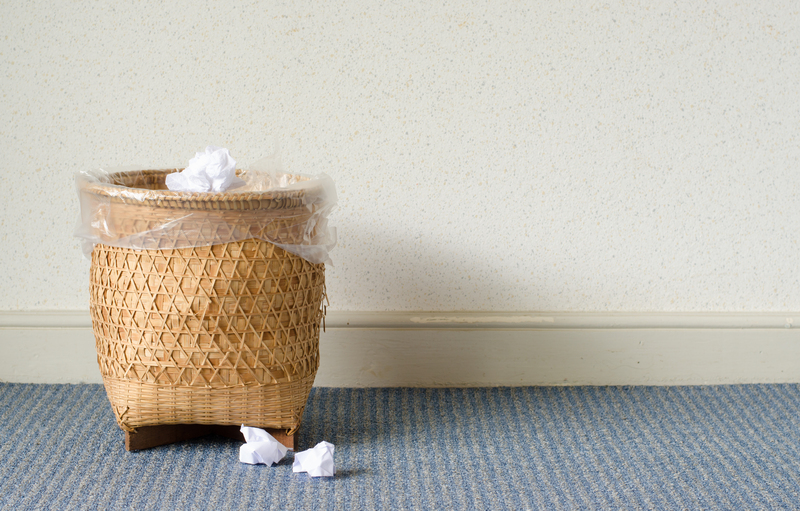PPE Waste Disposal: How to Do Your Part for the Environment
PPE waste disposal has emerged as a critical environmental challenge in recent years. The dramatic increase in the use of personal protective equipment (PPE) during the COVID-19 pandemic has led to an unprecedented surge in disposable masks, gloves, face shields, and gowns. While these essential materials protect individuals and communities, the improper disposal of PPE items poses significant threats to our environment.
In this comprehensive guide, we explore best practices for PPE waste management, practical steps individuals and organizations can take, and the environmental impacts of PPE litter. Whether you're a concerned citizen, a business owner, or a healthcare professional, this article will equip you with actionable knowledge to do your part for the environment.
Understanding PPE and Its Environmental Impact
What is PPE?
PPE stands for Personal Protective Equipment. These are items designed to protect individuals from various hazards, including infectious agents, chemicals, and physical injuries. Common types of PPE include:
- Masks - Surgical, N95, and cloth masks
- Gloves - Latex, nitrile, and vinyl gloves
- Face shields and goggles
- Protective gowns and coveralls
- Shoe covers and hairnets
The Environmental Cost of Improper PPE Disposal
The rise in single-use PPE has created a mounting waste management issue globally. When PPE is not disposed of properly, it can:
- Pollute water bodies and soil
- Threaten wildlife that may ingest or become entangled in debris
- Add to landfill waste, releasing microplastics as PPE items break down
- Introduce hazardous chemicals and pathogens into the environment
For example, disposable masks are primarily made from polypropylene, a type of plastic that can take hundreds of years to decompose. Large quantities of discarded masks and gloves have already been found on beaches, in rivers, and in urban green spaces, highlighting the urgent need for sustainable PPE waste solutions.

Best Practices for PPE Waste Disposal
1. Choose Reusable PPE Where Possible
One effective way to reduce PPE waste is to use reusable equipment whenever practical. For example, cloth masks can be washed and reused multiple times, unlike single-use surgical masks. Always ensure that reusable PPE meets appropriate safety standards and can be adequately cleaned between uses.
2. Separate PPE Waste from Regular Trash
It is vital to segregate PPE waste from regular household or business trash. Designated PPE disposal bins help prevent accidental contact with potentially contaminated items and enable proper downstream processing.
- Label PPE bins clearly and instruct users on their purpose
- Ensure bins have tight-fitting lids to prevent spillage
3. Handle PPE Waste with Precaution
Whether at home, in the workplace, or in public spaces, always handle used PPE with care to minimize health risks. Follow the steps below:
- Do not attempt to wash or reuse single-use PPE items
- Remove PPE carefully, touching only the straps or edges
- Avoid touching your face after handling used PPE
- Wash hands immediately after disposing of PPE
4. Follow Local PPE Waste Disposal Guidelines
Different communities and sectors have varying recommendations for disposing of PPE. Common guidelines include:
- Placing used PPE in a sealed bag before placing it in the trash
- Using specially marked hazardous waste bins in healthcare settings
- Following specific instructions for the disposal of contaminated or biohazardous materials
Always check with your local waste management authority or environmental agency for the latest protocols in your area.
5. Avoid Littering and Encourage Responsible Behavior
PPE litter is increasingly visible on streets, parks, and beaches. To combat this, everyone must act responsibly:
- Never toss used masks or gloves on the ground or in water bodies
- Report overflowing or damaged PPE bins to the relevant authorities
- Educate family, friends, and colleagues about the importance of proper PPE disposal
PPE Waste Recycling: Can PPE Be Recycled?
Challenges of PPE Recycling
Most single-use PPE items are made of plastics, but their recycling is complicated by:
- Contamination by biological agents
- Mixing with other materials (e.g., metal nose wires in masks, rubber in gloves)
- Lack of dedicated recycling programs and infrastructure
This means that in most areas, PPE waste disposal ends up in incinerators or landfills. Specialized recycling efforts are emerging, but widespread adoption will take time.
Emerging Solutions for PPE Recycling
Innovative companies and research groups are developing new PPE recycling technologies:
- Melting down polypropylene masks to produce construction materials or insulation
- Transforming used gloves into plastic pellets for reuse in manufacturing
- Creating energy through the incineration of PPE waste in controlled settings
If you live in an area with PPE recycling programs, follow their specific instructions. Never place used PPE in regular recycling bins unless explicitly allowed, as it can contaminate recyclables and pose health risks to workers.
The Role of Businesses in Sustainable PPE Disposal
Workplace PPE Waste Management
Businesses and institutions play a critical role in reducing environmental impacts from PPE. Here are some best practices for workplace PPE disposal:
- Provide clear signage and education on correct PPE disposal methods
- Install designated PPE waste bins throughout the premises
- Partner with licensed waste disposal companies for safe transport and processing
- Opt for suppliers offering eco-friendly or recyclable PPE products
- Track and report on PPE consumption and waste as part of sustainability goals
Green Purchasing and Sustainable Alternatives
Organizations can further minimize waste by choosing:
- Biodegradable masks and gloves made from natural fibers
- Reusable PPE for staff in non-hazardous roles
- PPE with minimal packaging or packaging made from recycled materials
Preventing PPE Pollution in Communities
Community Education and Initiatives
Educational campaigns are essential to raising awareness about the dangers of PPE pollution. Communities can organize:
- Workshops on PPE waste management and environmental responsibility
- PPE collection drives to ensure safe disposal
- Public art or social media campaigns spotlighting PPE's environmental impact
Engaging Schools and Youth Groups
Teaching children and teenagers about proper PPE litter disposal instills lifelong habits and creates a ripple effect within families and social circles. Encourage schools to:
- Include lessons on environmental stewardship
- Promote reusable PPE where possible
- Install easily accessible PPE bins on campus
PPE Disposal and Wildlife Protection
PPE pollution particularly threatens wildlife. Birds, fish, and small mammals can become entangled in elastic straps or ingest pieces of plastic PPE, often resulting in injury or death. Help protect wildlife by:
- Cutting the straps off masks and gloves before disposal to prevent entanglement
- Participating in local clean-up events to remove PPE litter from natural habitats
- Supporting organizations dedicated to wildlife conservation and pollution prevention
Government Policy and International Action on PPE Waste
Regulatory Approaches
Governments worldwide are addressing the PPE waste crisis through a mix of:
- Tighter regulations on medical and hazardous waste management
- Funding for PPE recycling research and infrastructure
- Public awareness campaigns about environmentally safe PPE disposal
- Encouragement for domestic PPE production to control standards and supply chain impacts
Global Cooperation and Guidelines
Bodies such as the World Health Organization (WHO) and United Nations (UN) are issuing guidance for member states, promoting best practices in PPE disposal and responsible consumption. International cooperation is vital as PPE pollution transcends borders, affecting oceans and migratory wildlife alike.

How You Can Do Your Part: A Practical Checklist
Every individual can contribute to safer and more sustainable PPE waste management. Here's a handy checklist to help you make a positive impact:
- Use reusable PPE wherever possible, ensuring it is appropriately cleaned
- Dispose of single-use PPE in a securely closed bin, never by littering
- Separate PPE waste from recyclables and regular trash
- Follow all local disposal guidelines and use community resources
- Educate others about PPE pollution and model responsible behavior
- Support efforts to develop sustainable PPE materials and recycling options
- Take part in or organize local clean-up campaigns targeting PPE litter
- Contact your local authorities if you spot illegal dumping or overflowing bins
Looking Ahead: The Future of PPE and Environmental Responsibility
The PPE waste problem is a complex, global challenge, but through coordinated individual, institutional, and governmental action, we can mitigate its environmental impact. The future holds promise, thanks to green innovation in materials, better waste infrastructure, and heightened public awareness.
By staying informed and making conscientious choices, each of us can help ensure that PPE--so crucial to our health--does not become a legacy of pollution. Together, let's do our part for the environment and create a cleaner, safer world for future generations.
Are you ready to champion sustainable PPE waste disposal? Start today--because every responsible action adds up to a healthier planet.
